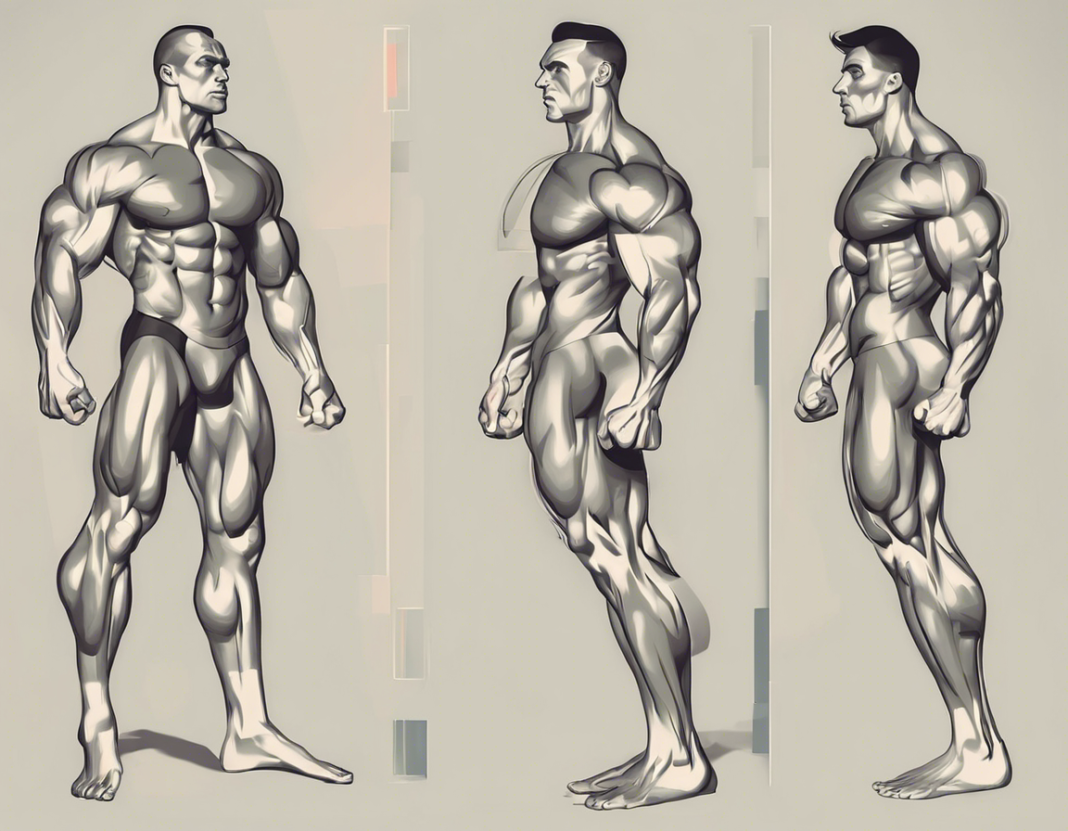The Bottom Line:
- The sensation of muscle soreness is common after exercise and results from microscopic injury to muscle fibers and connective tissues rather than lactic acid buildup.
- Following intense activity, the body initiates a repair process involving immune cells, inflammatory markers, and growth factors, leading to muscle strengthening and adaptation.
- Various factors such as exercise intensity, duration, fitness level, hydration, and diet can impact the severity and duration of muscle soreness.
- To manage muscle soreness, gentle stretching, foam rolling, and low-intensity exercise can aid in improving blood flow, relieving stiffness, and promoting muscle recovery.
- Understanding the science of muscle soreness can enhance fitness decisions, emphasizing the importance of proper hydration, nutrition, rest, and listening to your body’s signals for optimal performance and recovery.
The Science of Muscle Soreness
Muscle soreness, also known as delayed onset muscle soreness (DOMS), is a common experience among fitness enthusiasts and athletes. It typically manifests 24 to 48 hours after intense physical activity, characterized by stiffness, pain, and discomfort. Contrary to popular belief, muscle soreness is not solely due to the accumulation of lactic acid during exercise but is primarily caused by microscopic damage to muscle fibers and connective tissues.
The Mechanism of Muscle Repair
After strenuous activities, particularly those involving eccentric contractions where muscles lengthen under tension, tiny tears develop in the muscle fibers. In response to this damage, the body initiates a repair process. This involves the recruitment of immune cells, inflammatory markers, and growth factors to the affected area. Over time, muscles adapt and become stronger to withstand similar stress in the future.
Factors Influencing Muscle Soreness
The severity and duration of muscle soreness can be influenced by various factors, including exercise intensity and duration, individual fitness levels, hydration status, and diet. Engaging in unfamiliar or challenging activities, as well as sudden increases in workout intensity, can exacerbate muscle soreness. Understanding these factors can help individuals better manage and mitigate post-exercise discomfort.
While muscle soreness is a natural response to physical exertion, there are strategies to alleviate discomfort and enhance recovery. Incorporating gentle stretching, foam rolling, and low-intensity exercises can promote blood circulation, reduce stiffness, and aid in muscle recovery. Adequate hydration, proper nutrition, and sufficient rest are also crucial for optimizing recovery and minimizing soreness.
By comprehending the science behind muscle soreness and its management, individuals can make informed decisions about their fitness journey. It is essential to recognize that some level of soreness is expected, but persistent or excessive soreness might indicate issues like overtraining or inadequate recovery. By listening to the body, progressively advancing workouts, and prioritizing recovery, individuals can enhance performance and achieve their fitness goals effectively.
Muscle Repair Process
The Muscle Repair Process
After strenuous activities, especially those involving eccentric contractions where muscles lengthen under tension, small tears develop in the muscle fibers. This damage triggers the body’s repair mechanism, recruiting immune cells, inflammatory markers, and growth factors to the affected area.
Over time, as the repair process progresses, the damaged muscle fibers heal and strengthen. This adaptation is crucial for muscle recovery and future resilience against similar stressors. The repair process plays a vital role in rebuilding and enhancing muscle function post-exercise.
Optimizing Muscle Recovery
To support the muscle repair process and promote efficient recovery, individuals can implement strategies such as adequate rest, proper nutrition, and hydration. Ensuring sufficient protein intake is essential for muscle repair and growth.
Incorporating active recovery techniques like light stretching, foam rolling, and low-intensity exercises can also aid in blood circulation, reduce stiffness, and accelerate the healing of muscle fibers. These methods can enhance the overall recovery process and alleviate post-exercise soreness.
Preventing Overtraining and Injury
Understanding the importance of the muscle repair process can help individuals prevent overtraining and minimize the risk of injuries. Allowing adequate time for recovery between intense workout sessions is crucial for optimizing muscle repair and preventing excessive strain on the muscles and connective tissues.
By paying attention to the signs of fatigue and muscle soreness, individuals can adjust their exercise intensity and volume accordingly to prevent overloading the muscles. Prioritizing recovery and respecting the repair process can contribute to long-term fitness progress and overall well-being.
Factors Affecting Muscle Soreness
Key Factors Affecting Muscle Soreness
When it comes to understanding muscle soreness, several key factors play a significant role in determining the severity and duration of discomfort post-exercise. These factors can influence how your muscles respond to physical activity and how quickly they recover.
Exercise Intensity and Duration
The intensity and duration of your workout sessions can have a direct impact on the level of muscle soreness you experience. Engaging in high-intensity exercises or prolonged workouts may lead to more muscle damage, resulting in increased soreness. It is essential to gradually increase the intensity of your workouts to allow your muscles to adapt and reduce the risk of excessive soreness.
Individual Fitness Levels and Adaptation
Your individual fitness level and your body’s ability to adapt to physical stress also influence muscle soreness. Beginners or individuals who are new to a particular type of exercise may experience greater soreness as their muscles are not accustomed to the specific movements. Over time, as your fitness improves, your muscles become more resilient, leading to reduced soreness with consistent training.
Hydration Status and Nutritional Support
Proper hydration and nutrition are crucial elements in managing muscle soreness and promoting recovery. Dehydration can impair muscle function and delay the repair process, increasing the likelihood of prolonged soreness. Consuming sufficient water and electrolytes before, during, and after exercise can help maintain optimal hydration levels and support muscle recovery. Additionally, ensuring adequate protein intake and nutrient-rich meals can aid in muscle repair and growth, reducing the intensity of soreness.
Workout Variation and Progression
Introducing new or challenging exercises into your routine and rapidly increasing workout intensity or volume can contribute to heightened muscle soreness. Gradual progression and incorporating diverse training modalities can help prevent excessive muscle damage and minimize post-exercise discomfort. Balancing intense workouts with adequate rest and recovery periods is essential for optimizing performance and reducing the risk of overtraining-related soreness.
In conclusion, being mindful of these key factors influencing muscle soreness can empower individuals to tailor their exercise routines effectively, manage post-workout discomfort, and enhance overall performance and well-being. By implementing strategies that prioritize recovery, hydration, nutrition, and gradual progression, individuals can mitigate the negative effects of muscle soreness and progress towards their fitness goals with confidence.
Managing and Reducing Muscle Pain
Effective Strategies for Managing and Reducing Muscle Pain
After engaging in strenuous physical activities, experiencing muscle pain is a common occurrence. While some level of soreness is to be expected, there are strategies that can be implemented to alleviate discomfort and enhance the recovery process. Incorporating gentle stretching, foam rolling, and low-intensity exercises post-workout can aid in promoting blood circulation, reducing stiffness, and facilitating muscle recovery.
Importance of Hydration and Nutrition
Hydration and proper nutrition play crucial roles in managing muscle soreness effectively. Dehydration can hinder muscle function and delay the repair process, potentially leading to prolonged soreness. Ensuring adequate water intake and electrolyte balance before, during, and after exercise can help maintain optimal hydration levels and support muscle recovery. Additionally, consuming sufficient protein and nutrient-rich foods can contribute to muscle repair and growth, ultimately reducing the intensity of muscle soreness.
Rest and Recovery as Essential Components
Adequate rest and recovery are fundamental aspects of optimizing muscle recovery and minimizing soreness. Giving muscles ample time to repair and rebuild after intense workouts is essential for long-term performance improvement. Balancing workout intensity with sufficient rest periods allows the body to adapt and strengthen, reducing the risk of overtraining-related soreness. Prioritizing recovery alongside training efforts can lead to enhanced fitness progress and overall well-being.
Importance of Recovery in Fitness
Importance of Recovery in Fitness
Recovery is a critical aspect of any fitness regimen that is often overlooked but plays a vital role in achieving optimal results. After intense physical activity, the body undergoes stress and damage, particularly to muscle fibers. Proper recovery allows the body to repair and rebuild these damaged tissues, leading to muscle growth and improved performance over time.
Role of Rest and Regeneration
Rest and regeneration are essential components of the recovery process. Adequate rest periods between workouts give muscles the opportunity to recover and adapt to the stress they have been subjected to. During rest, the body replenishes energy stores, repairs tissue damage, and strengthens muscles, preparing them for future challenges.
Recovery Techniques and Strategies
Implementing effective recovery techniques can expedite the muscle repair process and reduce post-exercise soreness. Practices such as foam rolling, massage, and active recovery exercises can enhance blood circulation, alleviate muscle tension, and promote faster recovery. Additionally, proper hydration, nutrition, and quality sleep are crucial for supporting the body’s recovery and rebuilding processes.
By prioritizing recovery in your fitness routine, you can optimize your training outcomes, prevent injuries, and sustain long-term progress towards your fitness goals. Recognizing the importance of recovery as an integral part of your overall fitness journey can lead to enhanced performance, resilience, and well-being.





